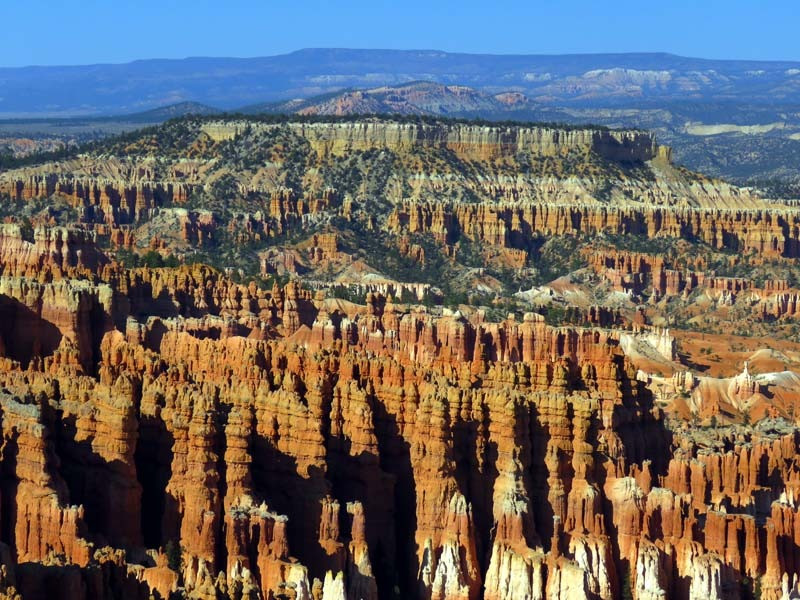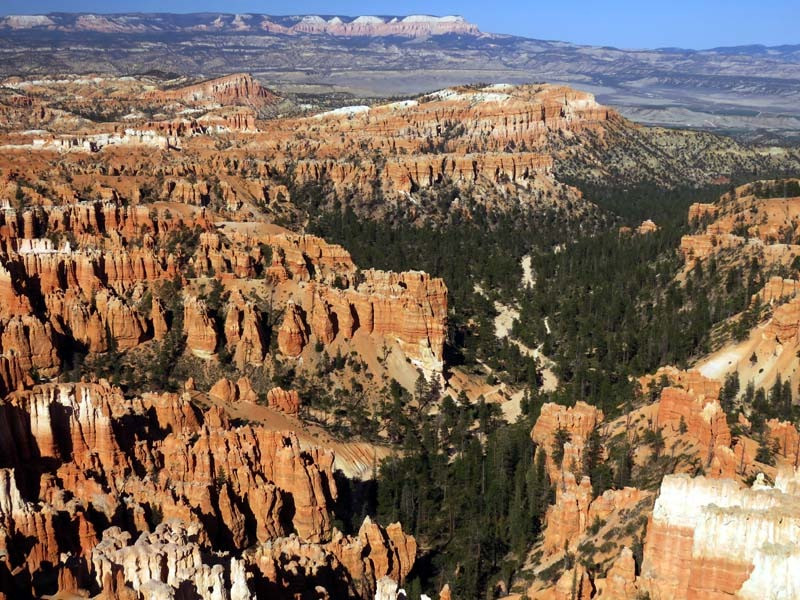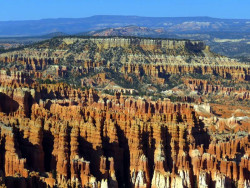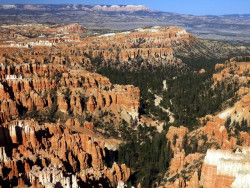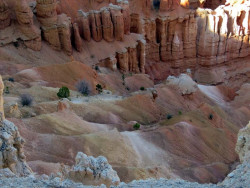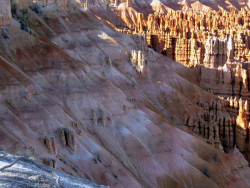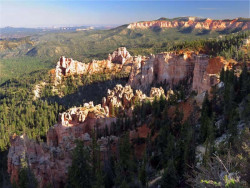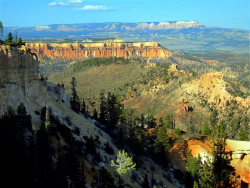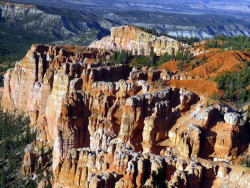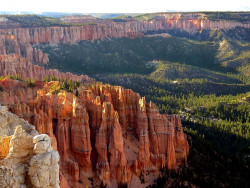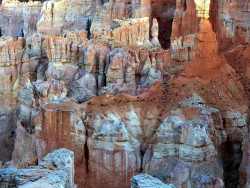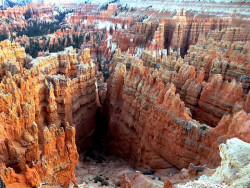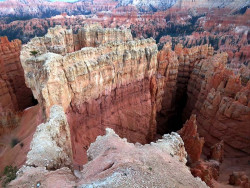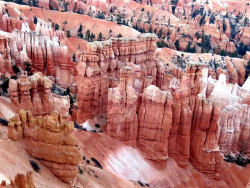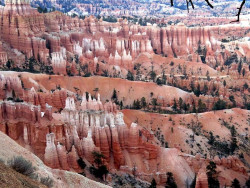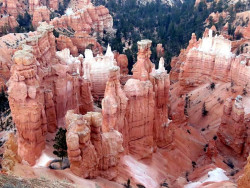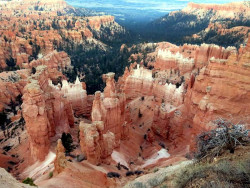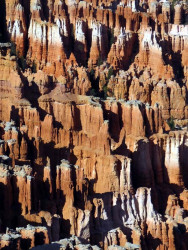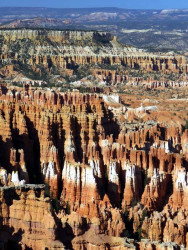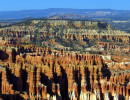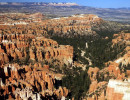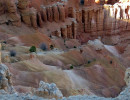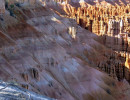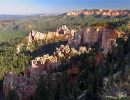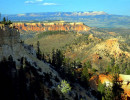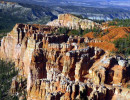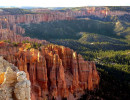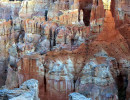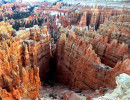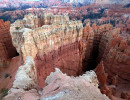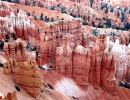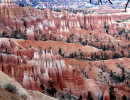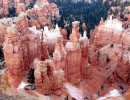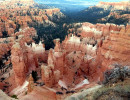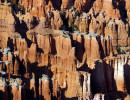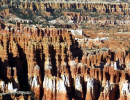Bryce
Bryce Canyon National Park
Bryce Canyon National Park is an American national park located in southwestern Utah. The major feature of the park is Bryce Canyon, which despite its name, is not a canyon, but a collection of giant natural amphitheaters along the eastern side of the Paunsaugunt Plateau. Bryce is distinctive due to geological structures called hoodoos, formed by frost weathering and stream erosion of the river and lake bed sedimentary rocks. The red, orange and white colors of the rocks provide spectacular views for park visitors. Bryce Canyon National Park is much smaller and sits at a much higher elevation than nearby Zion National Park. The rim at Bryce varies from 8,000 to 9,000 feet.
The Bryce Canyon area was settled by Mormon pioneers in the 1850s and was named after Ebenezer Bryce, who homesteaded in the area in 1874. The area around Bryce Canyon was originally designated as a national monument by President Warren G. Harding in 1923 and was redesignated as a national park by Congress in 1928. The park covers 35,835 acres (55.992 sq mi) and receives substantially fewer visitors than Zion National Park or Grand Canyon National Park, largely due to Bryce's more remote location.
Bryce Canyon was not formed from erosion initiated by a central stream, meaning it technically is not a canyon. Instead, headward erosion has excavated large amphitheater-shaped features in the Cenozoic-aged rocks of the Paunsaugunt Plateau. This erosion resulted in delicate and colorful pinnacles called hoodoos that are up to 200 feet high. A series of amphitheaters extends more than 20 miles north-to-south within the park. The largest is Bryce Amphitheater, which is 12 miles long, 3 miles wide, and 800 feet deep. A nearby example of amphitheaters with hoodoos in the same formation but at a higher elevation is in Cedar Breaks National Monument, which is 25 miles to the west on the Markagunt Plateau.
Little is known about early human habitation in the Bryce Canyon area. Archaeological surveys of Bryce Canyon National Park and the Paunsaugunt Plateau show that people have been in the area for at least 10,000 years. Basketmaker Anasazi artifacts several thousand years old have been found south of the park. Other artifacts from the Pueblo period Anasazi and the Fremont culture (up to the mid-12th century) have also been found.
The Paiute Native Americans moved into the surrounding valleys and plateaus in the area around the same time that the other cultures left. These Native Americans hunted and gathered for most of their food, but also supplemented their diet with some cultivated products. The Paiute in the area developed a mythology surrounding the hoodoos (pinnacles) in Bryce Canyon. They believed that hoodoos were the Legend People whom the trickster Coyote turned to stone. At least one older Paiute said his culture called the hoodoos Anka-ku-was-a-wits, which is Paiute for "red painted faces".
